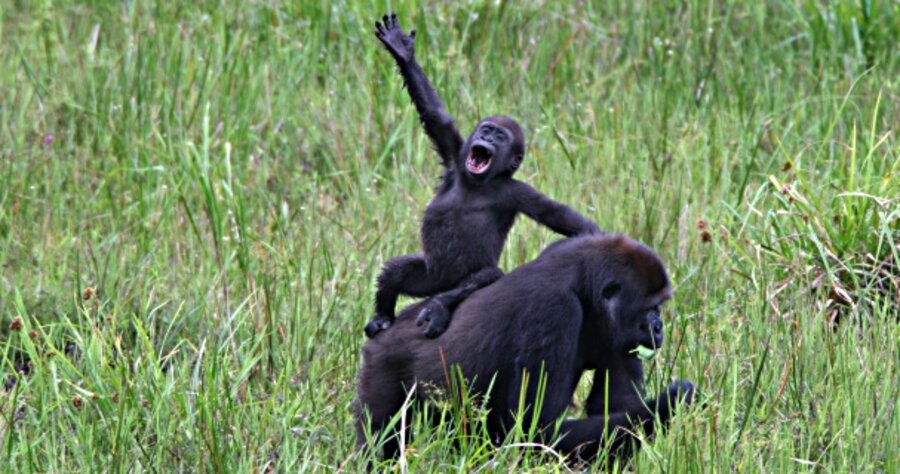Conservationists uncover 'mother lode' of gorillas in Africa
Loading...
A census in the north of the Republic of the Congo has discovered 125,000 previously uncounted western lowland gorillas, more than doubling the previous estimated worldwide population of the great ape subspecies.
The census, conducted by the Bronx Zoo-based Wildlife Conservation Society, covered an area of 18,000 square miles. The findings were announced at a press conference at the International Primatological Society Congress in Edinburgh, Scotland.
Previous estimates carried out in the 1980s placed the entire population of western lowland gorillas, whose habitat spans seven Central African Nations, at fewer than 100,000. Scientists believe that this number had fallen by at least half because of poaching and disease, particularly the Ebola virus. The subspecies is classified as "critically endangered" by the International Union for Conservation of Nature.
The WCS says a number of factors have contributed to the gorillas' success in this region, including the management of the country's protected areas, the remoteness of the locations where the apes were found, and an abundance of gorilla food.
"These figures show that northern Republic of Congo contains the mother lode of gorillas," said WCS head Steven E. Sanderson in a press release. "It also shows that conservation in the Republic of Congo is working. This discovery should be a rallying cry for the world that we can protect other vulnerable and endangered species, whether they be gorillas in Africa, tigers in India, or lemurs in Madagascar."
National Geographic describes the difficulty of tallying the population of the gorillas, which are wary of humans and notoriously difficult to count:
To assess their populations, WCS researchers instead used data on the numbers and ages of so-called sleep nests, temporary bedding made of leaves and branches.
Each group of lowland gorillas has a range of about 7.7 square miles (20 square kilometers), and the animals build the nests to sleep in each night before moving on in the morning.
The census work involved crossing hundreds of miles to count nests, then loading data into a mathematical model that estimated the number of gorillas living within a defined area.
Western lowland gorillas are just one of four subspecies of gorilla. As the Telegraph points out, there are thought to be fewer than 700 remaining mountain gorillas, 300 cross river gorillas, and possibly thousands of eastern lowland gorillas. The London daily notes that the International Union for Conservation of Nature lists all species as "critically endangered" except for the eastern lowland, which it lists as "endangered."
An editorial in the New York Times called the discovery "that rarest of things: a second chance for a critically endangered species."
This extraordinary discovery should be a powerful incentive to create new protected areas to help western lowland gorillas the way other national parks in the Congo Republic have already done. But it will take more than that. Without careful management of the forest resources that surround protected areas — and strict enforcement — a national park is nothing more than a line on a map.
But many other primates aren't so fortunate: As the Australian points out, nearly half of the world's 634 types of primates are threatened with extinction because of human activity. The worse is happening in Asia, where almost three-quarters of the continents native species are under threat. In Cambodia and Vietnam, 90 percent of primates – including gibbons, leaf monkeys, and langurs – are at risk.





